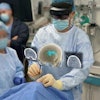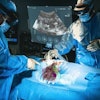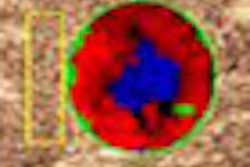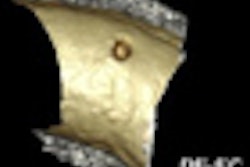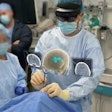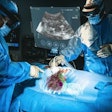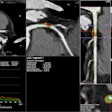The use of hardware acceleration techniques can dramatically improve the time it takes to perform 3D image registration, according to research from the University of Maryland School of Medicine in Baltimore.
A research team found that hardware acceleration can cut the time off 3D image registration from hours to less than a minute, without affecting registration accuracy.
"Intensity-based registration with hardware acceleration is a viable solution for providing on-demand image registration," said Raj Shekhar, PhD. He presented the research during a scientific session at the 2010 Society for Imaging Informatics in Medicine (SIIM) meeting in Minneapolis.
3D image registration has begun entering clinical practice, thanks to the emergence of hybrid imaging scanners, the use of manual and semiautomatic registration methods on some 3D workstations, and the development of real-time spatial tracking systems. But widespread adoption remains elusive, Shekhar said.
"The reason is that workstation-based methods still use manual steps, and as a result, they are tedious to use," he said. "And if they are fully automatic, they are very time-consuming."
To address this dilemma, the research team sought to utilize the latest hardware acceleration technology, provided to workstations through a thin-client model.
An intensity-based nonrigid registration technique, which maximizes mutual information between a pair of images, is automatic, versatile, and very accurate, Shekhar said. But its major weakness is its slow speed.
But that drawback appears to have been addressed by the combination of the researchers' own intensity-based registration algorithm with three field-programmable gate array (FPGA) chips that reside on a single commercially available, add-on PC board. Mutual information is calculated by the FPGA chips, while the optimization part is executed by the host PC, Shekhar said.
The architecture supports nonrigid and rigid registration and images up to a 512 x 512 x 512-voxel matrix.
To allow for broader access, the team incorporated the technology as a plug-in into the open-source OsiriX imaging software. With this setup, an image registration problem is initiated from the plug-in. Images are then sent securely from the computer running OsiriX to the FPGA server, and the registration process is performed. Results are then sent back to the thin client, Shekhar said.
To test their technique, the researchers performed a retrospective study on three different datasets. The rigid registration component was tested on 10 pairs of CT and MR data from a database from Vanderbilt University in Nashville, TN.
The group also evaluated its nonrigid image registration capability on two University of Maryland databases; one had 10 pairs of whole-body PET and CT images acquired on separate scanners, while the second database had 10 pairs of exhale and inhale CT scans of the lung or abdomen.
All datasets were resampled to a 256 x 256 x 256 matrix. The researchers determined registration accuracy by comparing their results with the reference results.
Registration took an average of 21.8 seconds with the Vanderbilt brain CT and MR images, 50.8 seconds with the whole-body PET/CT images, and 40.2 seconds with the exhale and inhale CT images.
"In all cases, it was less than one minute," he said. "That's the target that we were shooting for, to complete any registration task -- rigid or nonrigid -- in less than a minute."
The researchers also found that the hardware-accelerated technique did not hurt the quality of image registration. Registration had an average accuracy of 0.45 in the Vanderbilt brain CT and MR images, 0.56 in the whole-body PET/CT images, and 1.09 in the exhale and inhale CT images.
Normalized registration accuracy of less than 1 represents subvoxel accuracy, while a value of 1 offers voxel-order accuracy. Because most registration algorithms aim to achieve subvoxel or voxel-order accuracies, the results indicate that registration accuracy was retained with the technique, according to the researchers.
"Intensity-based registration removes all of the manual steps and is amenable to hardware integration," Shekhar said. "It also corrects for both rigid and nonrigid misalignment."
Future work will add more integration with imaging equipment and refine the technique's accuracy, Shekhar said. The researchers will also perform comparisons with other registration techniques.
By Erik L. Ridley
AuntMinnie.com staff writer
August 2, 2010
Related Reading
Advanced image processing stitches together CE images, August 31, 2009
CARS report: New CAD tool follows lung nodules over time, June 30, 2009
Open-source software delivers 3-way (PET/CT/MR) image fusion, April 25, 2008
Imaging set to play pivotal role for delivering molecular therapeutics, January 31, 2008
CARS news: Automated device tracking beats conventional CT/US guidance, June 28, 2007
Copyright © 2010 AuntMinnie.com

